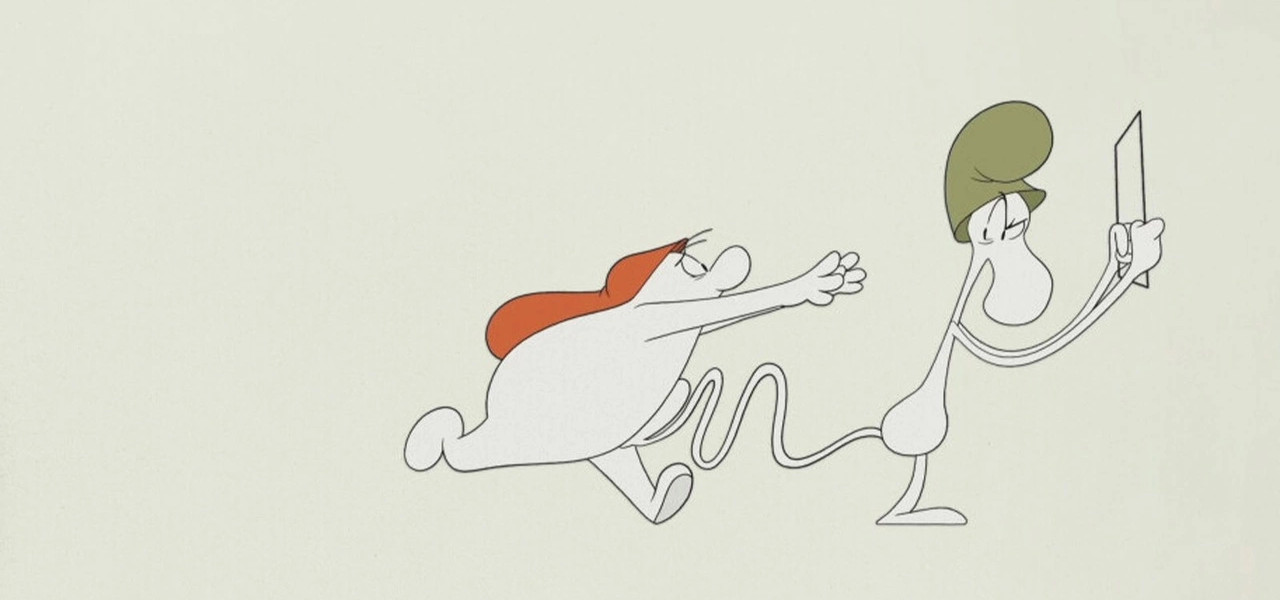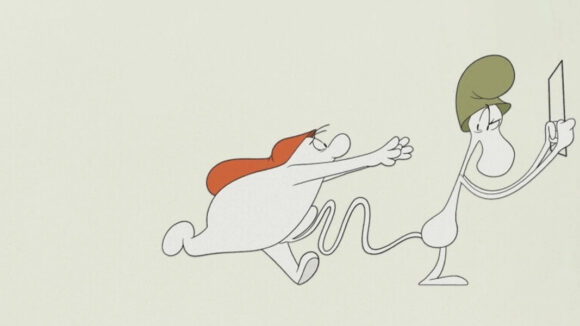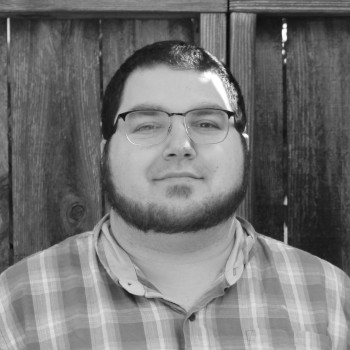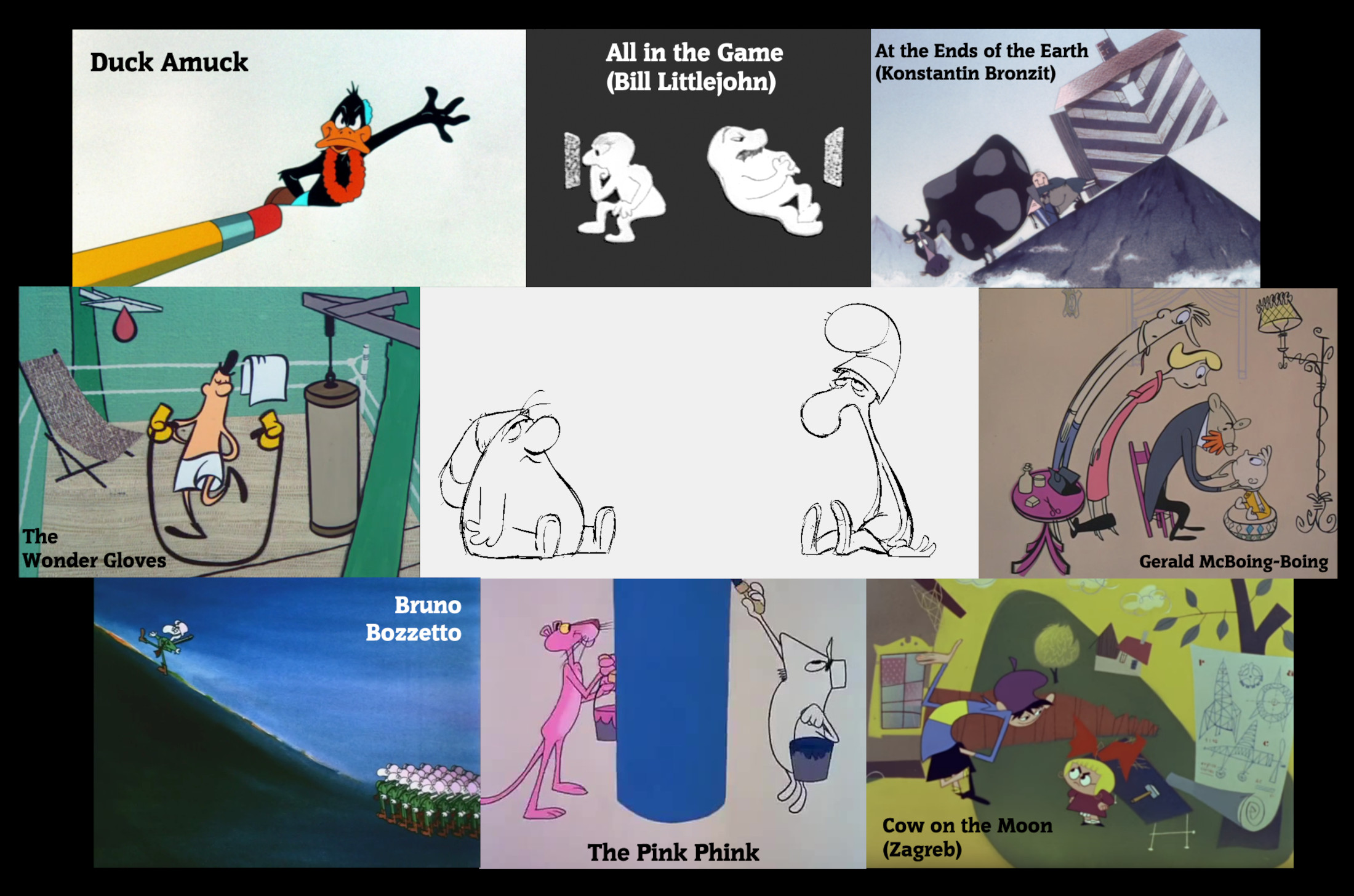

Michael Ruocco Takes Us Behind The Scenes Of His Short ‘Snif & Snüf,’ Available Online Now
Michael Ruocco’s new short film, Snif & Snüf, debuted online over the weekend to well-deserved praise.
Snif & Snüf is wonderfully charming. Its vintage cartoon action and one-of-a-kind soundtrack fuel a rivalry between two tremendously fun characters that make its roughly four-minute runtime feel almost too short. It’s incredible what Ruocco is able to do with some simple shapes, two 2d characters, and a limited color palette.
Ruocco is a highly skilled artist who has worked on studio fare and indie productions alike. Last year, his Looney Tunes Cartoons storyboards were nominated for an Annie Award. Other high-profile credits include popular series such as The Cuphead Show!, BoJack Horseman, and most recently, served as animation director on Vivienne Medrano’s hit indie series Helluva Boss.
We caught up with Ruocco, who told us about his development and production processes, explained how he found time to make a film while doing studio work, and praised the people without whom Snif & Snüf wouldn’t have been possible.
Cartoon Brew: You’ve worked on some of the most iconic animated properties of all time, but this is an entirely original pair of characters. Where did the idea for the short come from?

Michael Ruocco: This was an idea I had way back in college to pitch to Sesame Workshop as part of a collaboration they did with a sort of middleman animation outsourcing company that I don’t believe exists anymore. I came up with a rough concept, but before I pitched the idea to them, I found out that the middleman company was going to own the rights. I wasn’t going to be credited or paid, so I kept the idea to myself. Years later, while working on Looney Tunes Cartoons at WB, I decided to resurrect the idea when I wanted to try making a short again after not having made one in about eight or nine years.
What were some of your inspirations when developing the project?
The concept and character designs were inspired by a few different things, like the early Pink Panther cartoons (The Pink Phink in particular) and a lot of early UPA work and commercials. But my biggest draws were from the work of Bruno Bozzetto, Bill Littlejohn, and films from Zagreb in the 1960s. I don’t know why, but I love drawing characters with big noses, and a lot of my favorite shorts by these sources coincidentally do too. Go figure!

Given the amount of work you’ve done for studios in recent years, how did you find the time to put this together?
As I mentioned before, I started making this while boarding/writing on Looney Tunes Cartoons. When I’d finish a board early, I’d put time into my own short on the side. I wanted the film to have a more graphic/stylized approach to the animation, but a lot of my Looney Tunes sensibilities crept into my work subconsciously, so it’s a lot looser and has more fluid inbetweens than I initially wanted. But it worked out either way. Also, I’ve always been intrigued by films/shorts that all take place seemingly in one shot (i.e., Konstantin Bronzit’s At the Ends of the Earth), and I even did a few on Looney Tunes (Wet Cement, Shoe Shine-anigans), so this was another way for me to scratch that particular itch. It was a learning experience since I had to find economical, clever ways of finding places to cut. In the other shorts, at least the characters would go offscreen here and there, but in mine, Snüf is onscreen for the entire length of the cartoon, so it was tricky hooking shots up when I broke the boards into digestible pieces to animate later.
How long did you work on the short?
In total, the short took me about 5 years from start to finish, from 2019 to 2023, but a lot of that time was impacted due to outside factors that slowed me down, like my full-time jobs, the pandemic, life/health stuff, etc. So, it took a lot longer than I initially wanted to get it all out, since it’s such a simplistic film overall.
Can you talk a bit about your process? What was your workflow like?
Boards initially didn’t take too long, but my board file got corrupted, along with all my backups, so I lost everything and had to start over. Fortunately, I took a cell phone recording of what I had to show a friend before I timed it out, so I pretty much copied what I had over shaky cell phone footage of my Cintiq monitor as I clicked through the board frame by frame.
I tend to storyboard on shows with the mindset as if I had to animate it myself as well, so I try not to overcomplicate things. I try to economize shots/layouts or go through the trouble of posing out complex actions/breakdowns accordingly to give more information to the animators (foot placement, proper hookups, etc.). Since I knew I was just gonna be doing this solo, my boards were pretty close to the final animation keys, so going from the boards to animation was pretty straightforward.
I roughed it all out in TVPaint, but I had second thoughts about the cleanup process for time (I originally was gonna go for sort of a sketchy Xerox look), but I knew if I worked in Harmony for cleanup, some of the tools there would help make it easier for me to do (I have very shaky hands). I also knew more people who had Harmony and could potentially help me with clean up later. I ended up doing all the cleanup myself in the end just because I didn’t have enough money to pay folks, and I didn’t want people to work for free on it. But if anything, it helped me learn the Harmony process, which has been beneficial to me since.
The music and sound are so important to the short and demand pacing that is stricter than would have been necessary if you were working with dialogue. Can you talk a bit about the process of aligning the audio and visual components of the short?
The sound and music were all done by Yoav Landau, who had become a friend of mine over the years and has made a pretty successful musical career for himself as The Living Tombstone. I told him in passing that I was thinking about wanting the music to sound like brass band music from Moldova (specifically the group Fanfare Vagabontu, who did the music for the video game Rabbids Go Home), and he jumped at the idea of wanting to do it that way and be a part of it somehow. He even offered to hire live musicians to perform his music, which I thought was amazing of him to offer. My only real direction was that I wanted each character to have a corresponding sound/instrument to represent them in the film, à la Peter and the Wolf, which Yoav did perfectly (Snif vocalizes with woodwinds, Snüf with brass).
As experienced and amazing a musician as he is, Yoav didn’t have much experience doing “score-like” stuff before, and I certainly didn’t make it easy for him. I timed all the animation with no real indication or direction in regard to a beat other than most of the actions being more-or-less timed on 8s. So, tempos and such would fluctuate a lot throughout the short. But he found a way to work around my sloppily timed animation and really made it all flow well. He composed all the music himself on his own time while still doing all his major commitments for The Living Tombstone and other more important projects than my own. He then had different musicians from all around the world record their instruments separately, and he combined them together for the final product (not to mention doing all the sound effects himself, too!). He went above and beyond. I know the experience was a bit stressful for him, but it certainly doesn’t show that in the final work. He’s a good dude … I can’t help but acknowledge how much of, if not all, of the short’s success was supported by his contribution. Music really is like another character in the story, and it’s the glue that, I think, holds it all together.
Is there anyone else who worked on the short you’d like to give a shout-out?
My buddy Chris Allison, who I worked with on Looney Tunes Cartoons as a fellow boarder, was a huge help for me as well. He was supportive of my short and its progress since I first told him about it, and he offered to help out in any way he could. He ended up going above and beyond doing the final picture editing and compositing on it. He found old raw film footage that was scanned that added “age” to the film. He put in the faux cel-shadows behind the characters. He even figured out how to put a slight line wiggle on all the line art that I already animated, which I think gives it a lot more life. I still really can’t fathom how much effort he put into all this while simultaneously doing his own comics for ToonHole and working on multiple animated projects at the same time. He did it all out of passion and support for my own work, and I’m grateful to him for it. I have a little hand-written note of his that he wrote for me early in the production that I had hanging up on my visor all these years. It has helped me want to keep going at the times when I felt like I couldn’t anymore. It’s the genuine people like Chris that, despite the state of the industry right now, make me want to continue being a part of it in some way.

.png)